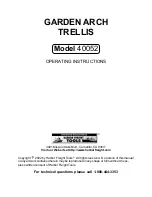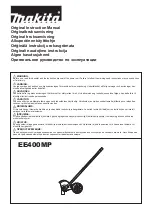
Documents are only to be used and distributed completely and unchanged. It is strictly the users’ responsibility to check carefully
the validity of this document with respect to his product. Manual-no.: 999164 / 19/05/2009
page 7 of 75
Operating conditions
➨
The pumps have no approval for operation in or for pumping of potentially
explosive atmospheres.
➨
The pumps are
not suitable
to pump
- unstable substances,
- substances which react explosively under
impact
(mechanical stress)
and/or when being exposed to
elevated temperatures
without air.
-
self inflammable
substances,
-
substances which are inflammable without air and
- explosive substances
.
• The pumps are
not suitable
for pumping substances which may form
deposits
inside the pump. Deposits and condensate in the pump may lead to increased tem-
peratures even to the point of excessing the maximum permitted temperatures!
• If there is a danger of
deposits
in the pump chamber (check inlet and outlet of the
pump), inspect the pump chambers regularly and clean if necessary.
• The pumps are
not suitable
for pumping dust and have
no approval
for opera-
tion below ground.
If pumping
different substances
, it is recommended to purge the pump with air or in-
ert gas prior to changing the pumped media in order to pump out residues and to avoid
reactions of the pumped substances with each other and with the pump materials.
Take into consideration interactions and chemical reactions of the pumped me-
dia.
Ensure that the materials of the
wetted parts
are compatible with the pumped
substances, see section ”Technical data”.
Safety during operation
➨
Adopt suitable measures to prevent the release of dangerous, toxic, explosive,
corrosive, noxious or polluting fluids, vapours and gases. In case install an ap
-
propriate collecting and disposal system and take protective action for pump and
environment.
➨
Prevent any part of the human body from coming into contact with vacuum.
➨
The user must take suitable precautions to prevent any formation of explosive
mixtures in the expansion chamber or at the outlet. In case of e.g. a diaphragm
crack, mechanically generated sparks, hot surfaces or static electricity may ignite
these mixtures. Use inert gas for gas ballast or venting if necessary.
➨
Potentially explosive mixtures at the outlet of the pump have to be drained ap-
propriately, sucked off or diluted with inert gas to non-explosive mixtures.
☞
Pay attention to the symbol ”hot surfaces” on the equipment. Adopt suitable
measures to prevent any danger arising from the formation of hot surfaces or
electric sparks. Provide a suitable protection against contact if necessary.
☞
Ensure that the exhaust pipeline is always free and pressureless.
☞
Ensure that the coolant outlet pipeline at the exhaust waste vapour condenser is
always free and that the coolant can flow off unobstructedly.
☞
Pumping at high inlet pressure may lead to overpressure at the gas ballast valve.
Pumped gases or condensate might be pushed out in case the valve is open. If
an inert gas supply is connected, ensure that the inlet pipeline is not contaminated.
NOTICE








































